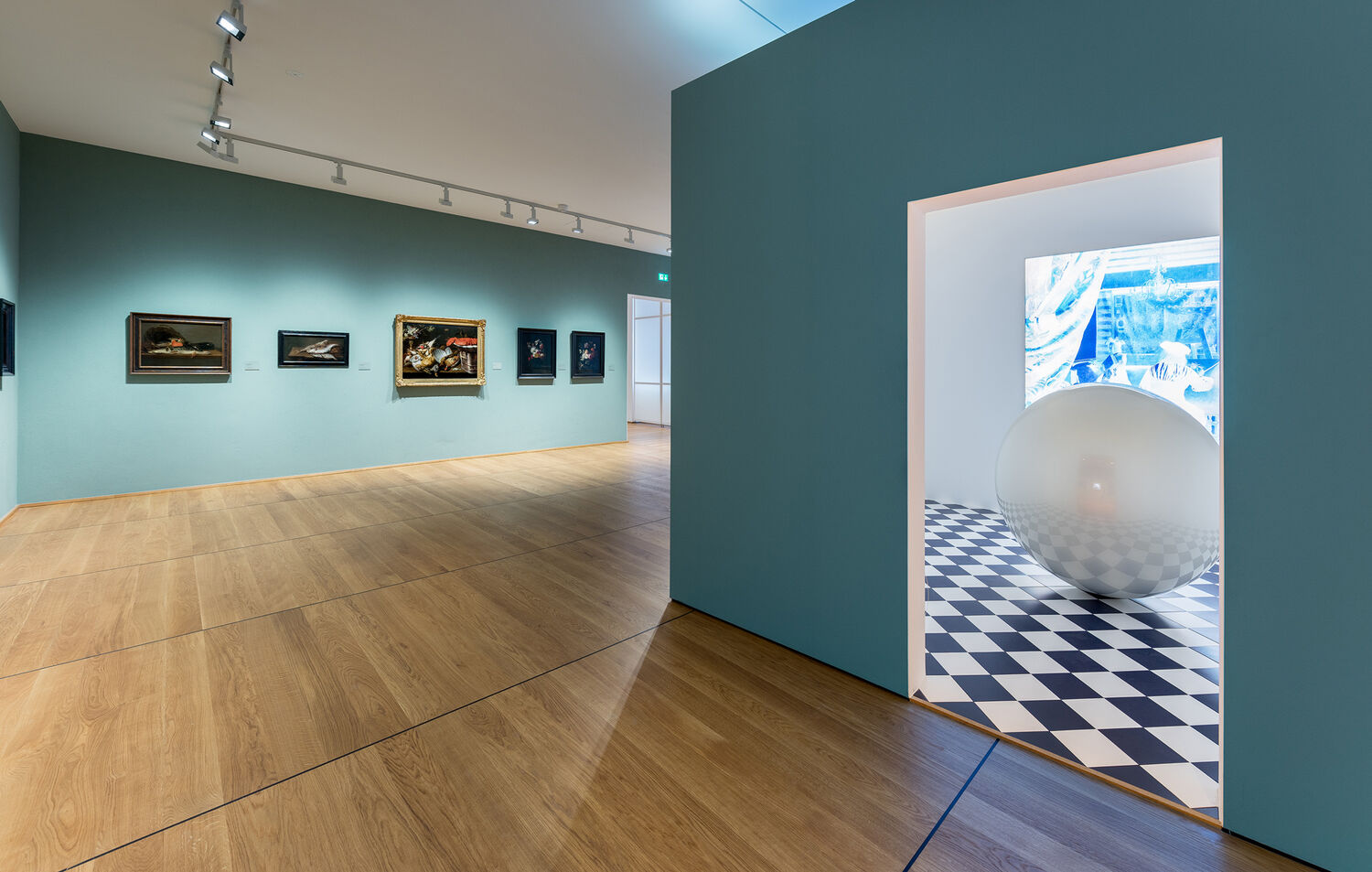10 Nov 23 — 2 Jun 24
Stephan Balkenhol, Column of figures, King on chair (detail), 2022, photo: Detlef Ilgner © VG Bild- Kunst, Bonn 2023
The internationally renowned sculptor Stephan Balkenhol is opening a special kind of time window for us. Part of the art family he has created gathers for a museum visit and honors the collection of Old Masters at the Museum Wiesbaden. As at an important family celebration, the closest members of the family and their extended circle, including their animal companions, come together to see each other again and discuss what they have seen. This creates an informal dialog between current contemporary art and its artistic predecessors. The visitors enter the resulting spatial image and become part of the shared art viewing experience. Traditional viewer relationships are broken up, set in motion and unite all participants.
Stephan Balkenhol
Balkenhol's artistic work is deeply rooted in European art history and its humanistic aspirations. At times, Balkenhol draws directly on this cultural heritage, transfers it into his very own style and gives us a modern, contemporary variation of the goddess, as in the Venus de Milo, for example. His figures represent our everyday lives in a very lively way and thus create a great closeness to ourselves. Balkenhol's figures are always also ourselves.
Stephan Balkenhol
Since 2013, the Museum Wiesbaden has decidedly not shown a „stacked“ time in its presentation of the Old Masters. It is no longer simply a matter of displaying what is available, but of constructively questioning the collection and its art. Collaboration with living artists also plays an important role.
The Hegelian concept of around 1840, which assumes a linear history and thus also suggests a correspondingly chronological presentation of the artistic evidence of this history — as is still binding for the majority of museums today — was deliberately avoided.
Instead, a thematic arrangement was chosen for the works on display, which cover a period from the early Middle Ages to the 19th century.The seven rooms on the second floor of the south wing now focus on the following themes: religion (two rooms), mythology, portraits, 17th century Netherlandish art, still life and landscape. As artistic processes within these genres are still virulent today, these thematic areas are supplemented by positions from contemporary art. These are concrete confrontations between artists working today and the Old Masters within the respective genre. Here, too, there is no static juxtaposition of old and new works that can be reduced to a single common theme, but rather a determined artistic contextualization and updating of a theme. To this end, a separate concept has been developed for each room and each theme, which is intended to remain in a lively, i.e. constantly changing, dialog with the permanent exhibition in the future.
„Ten years ago, the Old Masters collection was redesigned and divided into themed rooms. We are delighted to be able to celebrate this anniversary with Stephan Balkenhol.“
Dr. Peter Forster, Curator Collections 12th to 19th century

The spatial installation Grapheme by Berlin artist Robert Seidel, born in 1977, is the entrance to the rooms of the Old Masters. Like a tunnel, the space simultaneously condenses and expands by means of colors, mirrors, sculptures, projections and sound, taking the viewer on a spherical journey into unknown worlds. This journey compresses the artistic expressive possibilities of the centuries through color, form, space and statement and sets them in motion. The memories of an original with its ever-changing meanings create friction in the present. Seidel's spatial installation stands for the constant revitalization of our cultural heritage.


In this installation, Katase explores Jan Vermeer van Delft, one of the most famous Dutch Baroque artists. His paintings become the starting point for a complex staging in which Vermeer's unique handling of light and his use of the camera obscura are also addressed. In combination with Dutch works from the 17th century from the museum's art collection, Katase creates an unusually memorable combination of old and new art.
Stephan Balkenhol was born in Fritzlar, Hesse, in 1957 as the youngest of four sons.
After graduating from high school in 1976, Balkenhol went to Hamburg to study at the Hochschule für Bildende Künste.
From 1979, he worked in the sculpture class of the abstract sculptor Ulrich Rückriem. Towards the end of his studies, in 1982, Stephan Balkenhol made a radical change: he increasingly worked with human heads made of clay and finally wood. After graduating, he created his first wooden human figures.
Since 1983, he has had over 100 solo exhibitions in well-known galleries and international museums. The award-winning sculptor has created numerous sculptures for public spaces.
From 1992 to 2023, Balkenhol was Professor of Sculpture at the State Academy of Fine Arts Karlsruhe.
